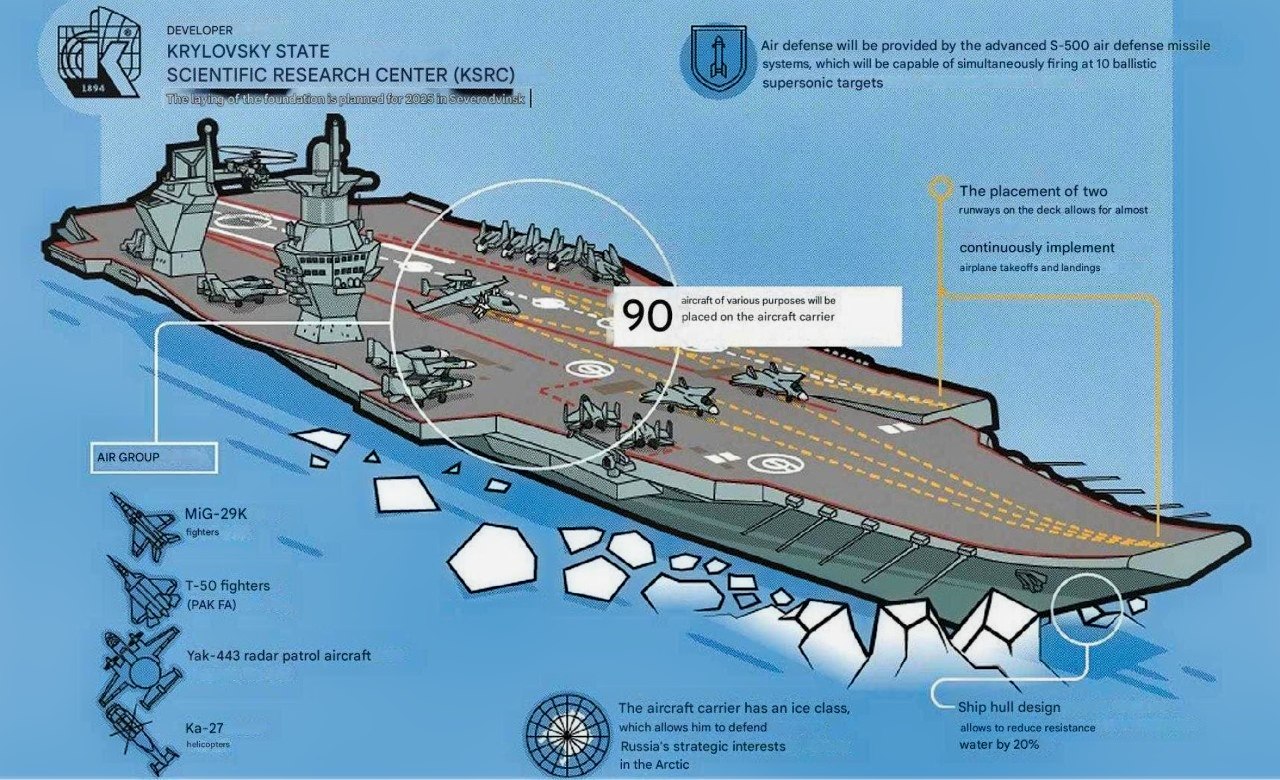Summary and Key Points: Russia dreams of building the nuclear-powered Shtorm aircraft carrier to rival America’s Nimitz-class carriers.
-Designed by Krylovsky State Research Center, Shtorm would carry 90-100 aircraft, feature nuclear propulsion, dual runways, and advanced defenses, including S-500 missiles.
-It aims for global power projection, particularly in the Arctic and contested waters.
-However, severe limitations plague Russia’s naval ambitions: funding shortages, poor industrial capabilities, sanctions, and the troubled legacy of the current Admiral Kuznetsov.
-Given these barriers and Russia’s recent naval failures, the ambitious Shtorm carrier remains a distant, overly optimistic goal, unlikely to become operational by its targeted 2030 timeline.
That 1 Word: Failure.
Why Russia’s New ‘Shtorm’ Aircraft Carrier May Never Sail
Russia wants to develop a blue-water navy that can project power beyond its region to patrol the Middle East, East Asia, and the Arctic. But all such fleets struggle in some way. Russia’s main problem is its lack of an active aircraft carrier that can bring an air wing to a maritime fight. The cursed bucket of bolts that is the Admiral Kuznetsov is still in repair-and-refit mode after enduring several accidents across a number of years that have killed sailors and workers. It may never sail again.
What Russia really wants is a new nuclear-powered carrier that could deploy around the world with a carrier strike group. It is trying to develop just such a carrier, which it calls the Shtorm. Russian President Vladimir Putin’s admirals promise him that with more money and more resources, this vessel would challenge the U.S. Navy’s Nimitz-class carriers someday.
This of course is wishful thinking by the Russians, who have no great aptitude for constructing large, nuclear-powered ships. The Shtorm could be dead on arrival.
Shtorm: Could This Challenge the U.S. Navy Famed Nimitz-class Carriers?
The Shtorm is being conceptualized by the Krylovsky State Research Center. The Russians want it to be as big as a Nimitz-class carrier, with similar speed and range, and the capability to launch and recover a large number of aircraft.
This Russian carrier is planned to have two runways for continuous sorties. It would carry 90 to 100 aircraft, including the MiG-29K fighter, a stealth fighter, the Yak-44 airborne radar patrol airplane, and the Ka-27 helicopter. These are for air-defense, ground-strike, aerial battle command-and-control, electronic-warfare, and anti-submarine duties.
The carrier would have the ability to patrol in ice-covered waters, which makes it perfect for handling the rough seas of the Arctic. The Shtorm would likely displace 95,000 tons and would be around 1,100 feet in length, which makes it comparable to the Nimitz-class.
The Russian carrier would be powered by a RITM-200 or RITM-400 nuclear reactor, with gas turbines that can push out 30 knots—again, a speed similar to what the Nimitz-class can achieve. Russian engineers and designers believe the Shtorm, with its “ice class hull,” could someday cut through the water 20 percent more efficiently than the American nuclear flat-tops.
Carrier-Borne Su-57 Felons?
While the Shtorm would not have stealth fighters such as the American F-35C, the Russians could make a naval version of the Su-57 Felon for carrier operations.
The Shtorm would be heavily defended, not only by carrier strike groups that would employ a protective screen of several ships and submarines, but also by air-defense missiles on board. The ultra-modern S-500 surface-to-air missile systems are planned to be on the carrier. This system can take on multiple bogeys, including enemy fighters and anti-ship missiles, at once.
The Russians are ever-confident and believe the Shtorm would be effective for 50 years of active duty. This seems optimistic. Moscow has never built a nuclear-powered carrier. It can’t even keep the conventionally powered Admiral Kuznetsov at sea for extended periods—even when the vessel is not laid up at port indefinitely.
Shtorm Is Same Song; Same Disappointing Ending
We have heard this story before. Russia will have hypersonic weapons that will change the game. Russia will sell numerous Su-57 and Su-75 stealth warplanes overseas to rival the American F-35. Russia has a nuclear-armed torpedo that could take out cities like London and New York. I could go on, but you get the idea.
Times are tough for the Russian navy. Putin’s maritime force has been embarrassed in the Black Sea and is functionally incapable of more battle patrols in that region. The shipyards are starved of money and manpower. International sanctions have taken a bite out of Russia’s defense-industrial base, and Russian admirals have to take a back seat to the generals who have a tenuous hold over land warfare.
The Shtorm sounds great on paper, but it is not likely to come to fruition anytime soon. It is understandable that Putin wants a nuclear-powered carrier, especially one that could steam around the Arctic, bullying Canada and challenging the United States. But the Shtorm concept will be challenging to build into a real ship that can take to the high seas.
Russia wants this paper tiger to be ready by 2030, and that looks optimistic. It should probably focus more on the Admiral Kuznetsov, and get that trail-of-tears ship in the water for extended periods. Russian pilots who would be tasked with carrier aviation operations are out of practice and inexperienced. The airplanes have been out of service. The navy has low morale, and Putin is trying to negotiate for peace in Ukraine. Russia just does not have the wherewithal to make this Shtorm aircraft carrier a reality.
Russia’s Only Aircraft Carrier: A Photo Essay
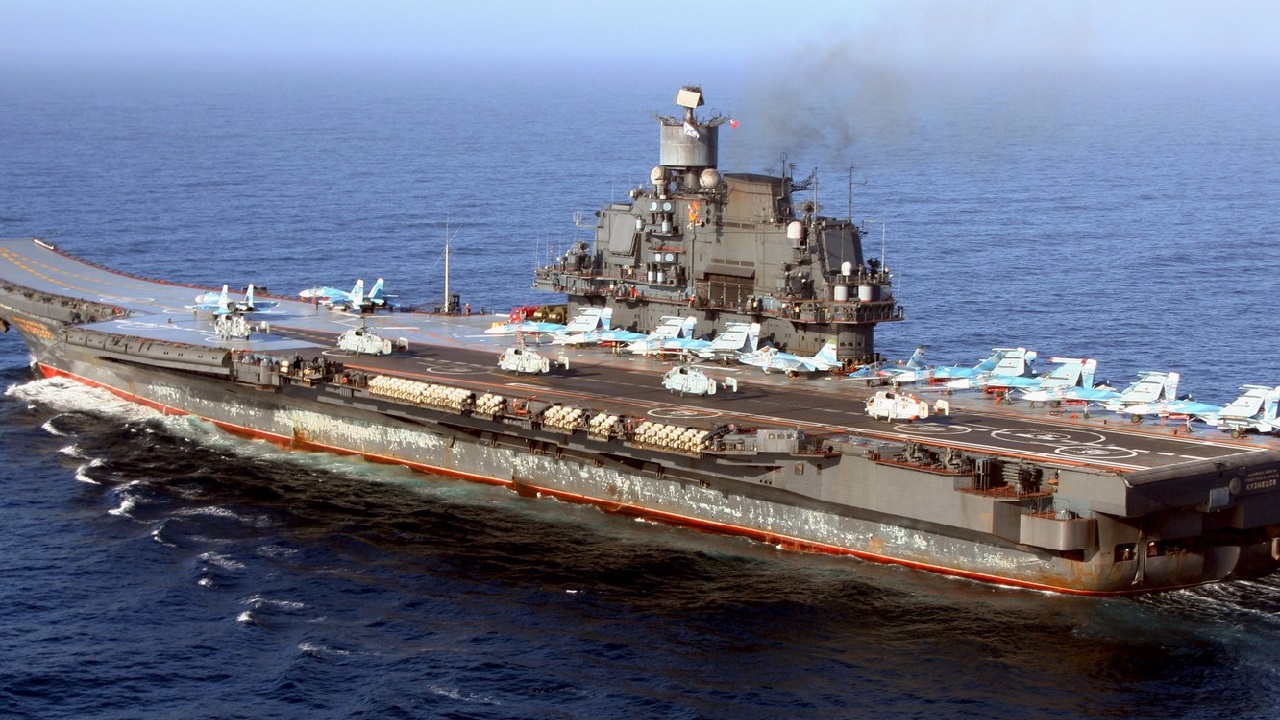
Admiral Kuznetsov Aircraft Carrier. Image Credit: Creative Commons.
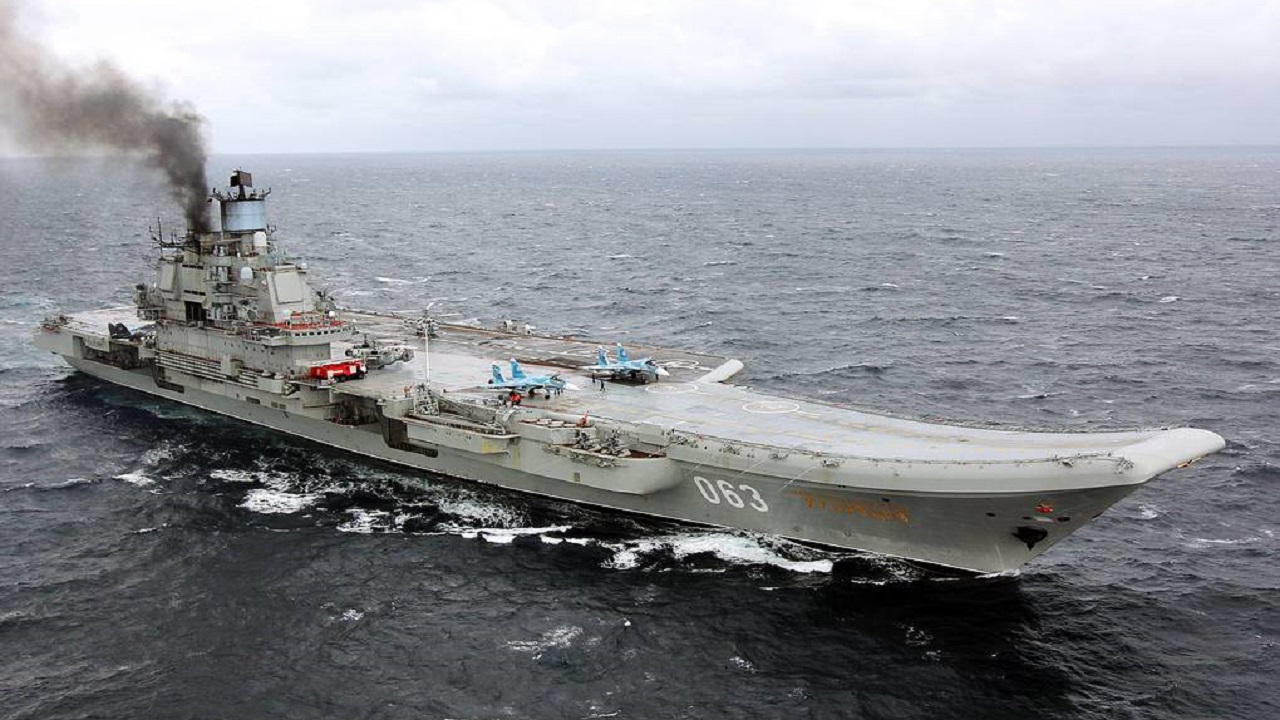
Russian Navy Northern Fleet Press Office/TASS/Russian State Media
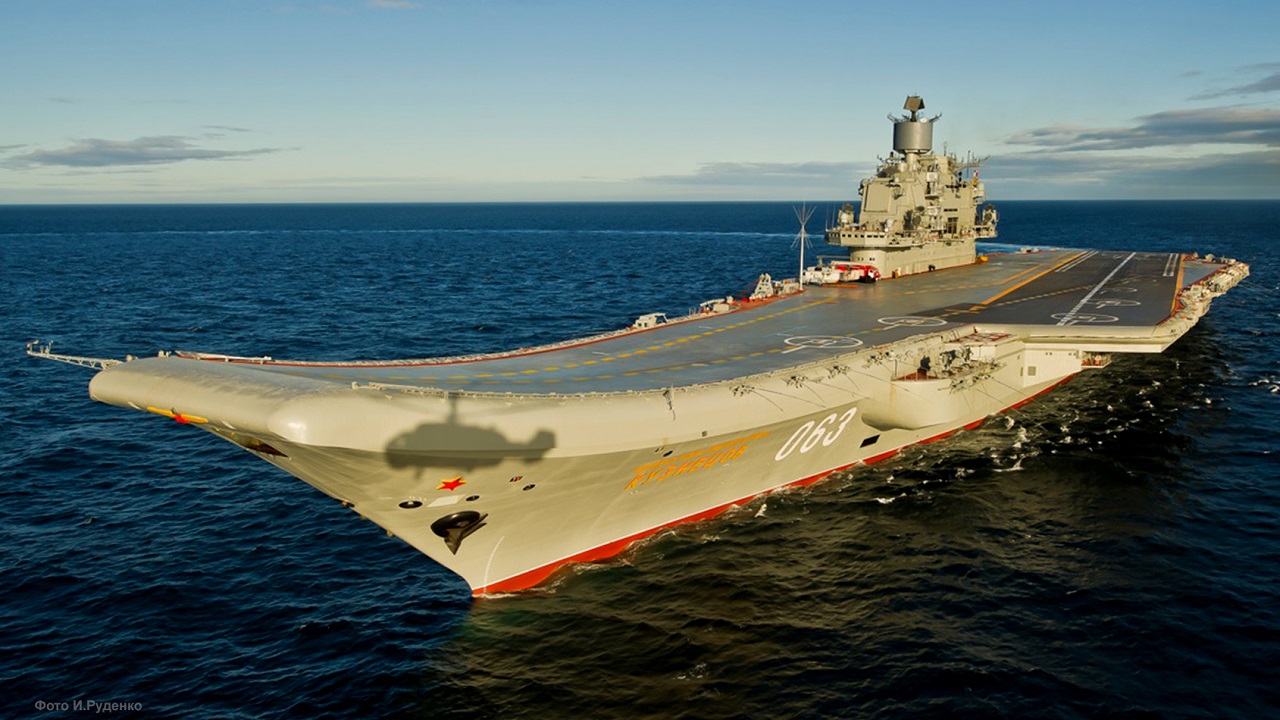
Russia’s Admiral Kuznetsov. Image Credit: Creative Commons.
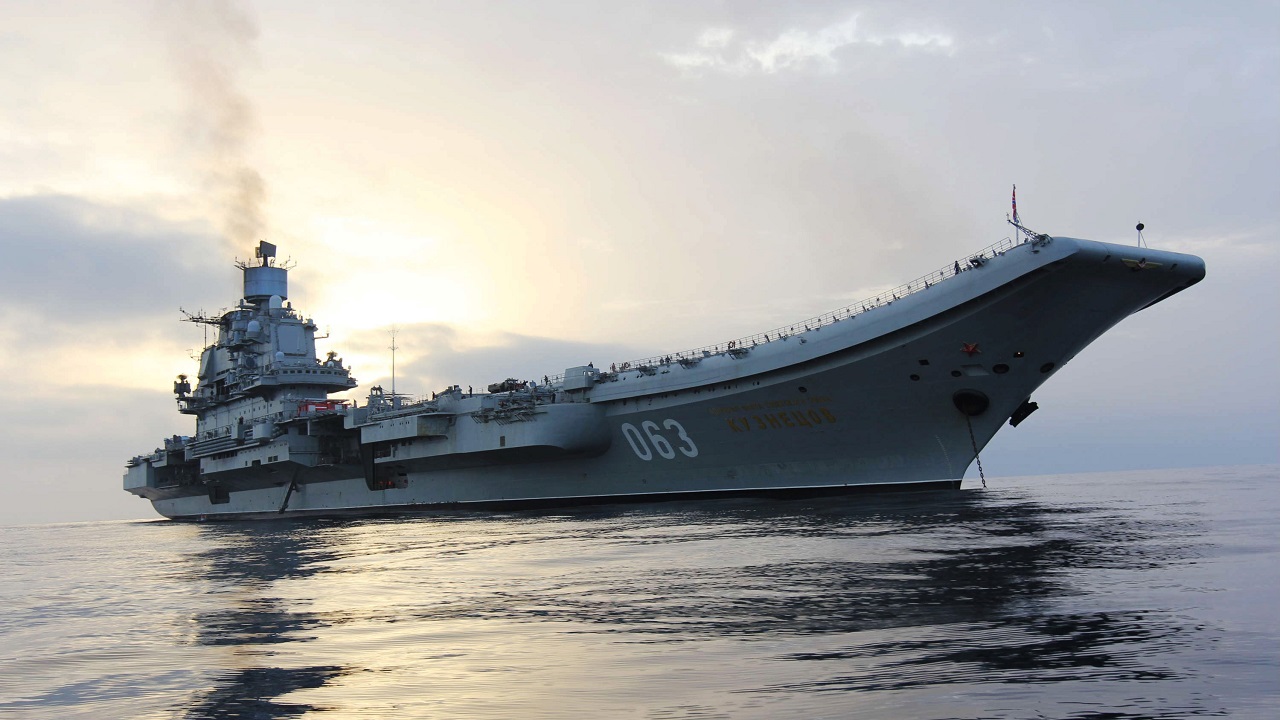
Admiral Kuznetsov Aircraft Carrier from Russia. Image Credit: Creative Commons.

Admiral Kuznetsov. Image Credit: Creative Commons.

Admiral Kuznetsov Aircraft Carrier. Image Credit: Creative Commons.

Russia’s Admiral Kuznetsov Aircraft Carrier. Image Credit: Russian State Media.
About the Author: Dr. Brent M. Eastwood
Brent M. Eastwood, PhD, is the author of Don’t Turn Your Back On the World: a Conservative Foreign Policy and Humans, Machines, and Data: Future Trends in Warfare plus two other books. Brent was the founder and CEO of a tech firm that predicted world events using artificial intelligence. He served as a legislative fellow for U.S. Senator Tim Scott and advised the senator on defense and foreign policy issues. He has taught at American University, George Washington University, and George Mason University. Brent is a former U.S. Army Infantry officer. He can be followed on X @BMEastwood.

